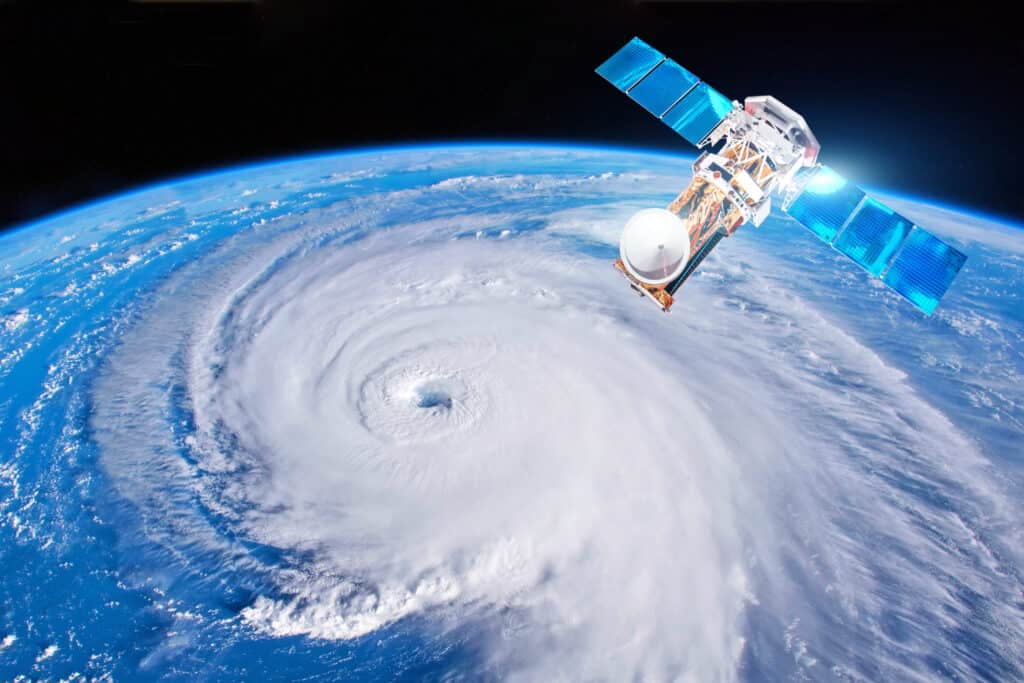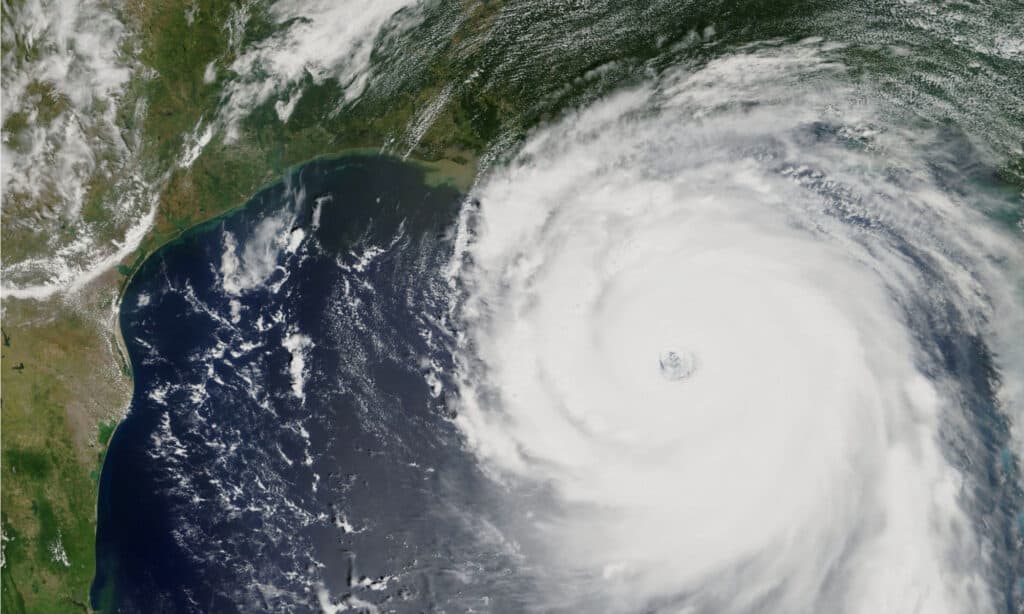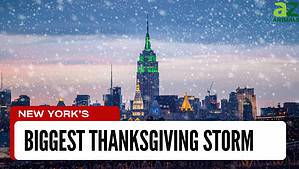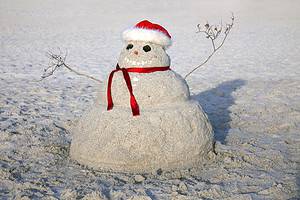Famous hurricanes from the past few decades with names like Sandy, Katrina, and Andrew have made headlines and become talking points for years after they happen. Part of the reason for that is the names themselves.
So why do hurricanes have names? To avoid any pesky mix-ups and for ease of communication both during and after each storm.
When a hurricane is coming, information must be passed on to hundreds of stations, ships, and coastal locations for safety and tracking. Using a name makes this information much easier to pass on. After the storm, the name also makes it easy to identify which storm is being referred to. It also helps to reduce the possibility of confusion when multiple storms happen in the same season or around the same time.
When Did They Start Naming Hurricanes?
People have always sought out ways to identify notable storms. In the early 1900s, a storm tore the mast of a boat called The Antje, and became known as Antje’s Storm. Before the naming system, confusing latitude and longitude names were used in the United States. These identifiers were not easily communicated and sometimes caused miscommunications. In the late 17th and early 18th century in the West Indies, storms were named after the Saint Day they fell upon.
In 1953, the United States started using female names for hurricanes to identify them more clearly. Then, in 1979, they decided to use alternating male and female names.
How Does the Hurricane Naming System Work?
Each year the World Meteorological Organization puts out a list of names from A to Z for the Atlantic hurricanes of that year, with the exception of the letters Q, U, X, Y, and Z. The lists are recycled every six years. However, if a hurricane comes along that is powerful and causes a lot of death or destruction, that name gets retired. It just wouldn’t be appropriate to have another hurricane called Katrina or Ida.
Why Did They Use Greek Letters for Hurricanes?
There are 21 possible hurricane names each year. If there are more than 21 named storms that year, after using the last name, the World Meteorological Organization (WMO) now has a list of extra names to be used. In the past, they used to use Greek letters for the excess storms. However, in 2021 the WMO decided this method wasn’t very efficient for the purpose of communicating information about storms. They cited several reasons why including:
- Several Greek letters sound the same and come one after another. This can be confusing.
- People living in the Atlantic regions where hurricanes happen may not be familiar with Greek letters.
- People may focus more on the name of the storm than the actual impact of the information being transmitted as compared to the usual names.
- In 2020, two Greek letters storm names, Eta and Iota, needed to be retired, and the WMO had not previously put a plan into place for that.
Naming Other Tropical Cyclones
Technically, hurricanes are a type of tropical cyclone that occurs only in the Atlantic Ocean and the Eastern Pacific Ocean. However, there are other types of tropical cyclone storms worldwide. The WMO is responsible for naming all these storms. Most of the name lists function similarly. However, in areas with many different countries and languages, like the Southwest Indian Ocean, countries can submit names to make sure their culture and language are represented.
Pacific Hurricane Names
While we mainly think of hurricanes as occurring in the Atlantic Ocean and affecting the Caribbean Islands, the southeastern United States, and more infrequently New England, there are also hurricanes in the Northeastern Pacific Ocean. Pacific Hurricanes mostly affect Mexico’s East Coast and do not usually hit the continental US. This is due to the lack of the Gulf Stream in the Pacific. This warm Atlantic current provides East Coast hurricanes with more warm water to move northwards. Warm water is essentially a hurricane’s fuel. Pacific hurricanes can only survive further south than Atlantic ones since the ocean is much colder.
These storms follow a similar naming convention to Atlantic hurricane names, except that they include names starting with the letters X, Y, and Z.
Can You Have a Hurricane Named After You?
No, you can not have a hurricane named after you. The WMO meets annually to choose the names. The storms are not named after any particular person. They try to choose names that are common in the region that most people would easily be able to say and understand.

Satellites provide an accurate, bird’s-eye view of hurricanes, including the storm’s “eye.”
©aappp/Shutterstock.com
Famous and Retired Hurricane Names
Here are some of the most notorious hurricane names that had to be retired for causing so much damage:
Hurricane Ida
In 2021, Hurricane Ida became the second most destructive storm to hit Louisiana. Of course, it is second only to Hurricane Katrina. It was a category 4 storm with winds of 150 miles per hour. It hit on August 29th, the 16th anniversary of Hurricane Katrina. However, once it moved on from its landfall target, it wasn’t done with its destruction. After damaging 100% and completely destroying 50% of the structures in Grand Isle, Louisiana, and causing damage in other places in the state as well, the storm moved northwards. Even though it weakened, it caused tornados in the mid-Atlantic region of the US and widespread flooding in the densely populated northeast. Over 40 people died in the northeast due to flooding, mainly people living in basement-level apartments. Overall 107 people died from the storm. The storm was the 4th costliest hurricane in the United States.
Hurricane Harvey
Hurricane Harvey is tied with Hurricane Katrina for being the number one most expensive storm on record. This category 4 storm affected Louisiana but hit Texas the hardest in 2017. Some areas in the path of the storm got 40 inches of rain over four days. More than 17,000 rescues were needed due to the incredible flooding that happened. The storm damaged at least 300,000 structures in Texas. During the storm, the National Weather Service had to add two new colors to their rain index to reflect the amount of rainfall. The storm killed 107 people overall. 106 of them were in the United States and 103 of those people were in Texas.
Hurricane Sandy
While Hurricane Sandy was only a category 3 storm at its peak, it is one of the deadliest and costliest hurricanes on record. Part of the reason for that is its size. It is the largest Atlantic hurricane ever. The diameter of the storm was over 1,000 miles. The late October storm affected places from the Caribbean to Canada and everything in between in 2012. It killed over 200 people, 49 of them in New York. In the U.S., it caused $65 billion in damage. Most notably, it caused the NYC Subway System to flood and caused the release of over 10 billion gallons of raw sewage into the waters surrounding the city.
Hurricane Katrina
In 2005, Hurricane Katrina, a category 5 storm, made landfall on August 19th. It is one of the most deadly and destructive storms ever recorded. Over 1800 people died. At the time, it was the most expensive storm on record, causing $125 billion in damage. Now it is tied only with Hurricane Harvey. The storm affected the city of New Orleans heavily, after the levees that protect the city from ocean surges failed. 80% of the city flooded, and people who remained in the city had no access to basic needs like shelter, clean water, or food. This caused a humanitarian crisis as it took days for aid to arrive. Many people criticized the government’s response to the storm, perhaps most famously, Kanye West.

This photo, provided by NASA, shows Hurricane Katrina bearing down on New Orleans, Louisiana, in 2005.
©lavizzara/Shutterstock.com
Learn More:
Find out more about hurricanes and other natural disasters:
- Discover The Highest Wind Speed Ever Recorded On Earth!
- The Deadliest Natural Disasters of All Time
- These are the 10 Wettest Cities in the United States
- The Most Devastating Natural Disasters on Earth and the Damage They Caused
The photo featured at the top of this post is © FotoKina/Shutterstock.com
Sources
- Ocean Service NOAA, Available here: https://oceanservice.noaa.gov/facts/storm-names.html
- World Meteorological Organization, Available here: https://public.wmo.int/en/media/press-release/wmo-hurricane-committee-retires-tropical-cyclone-names-and-ends-use-of-greek
- National Hurricane Center NOAA, Available here: https://www.nhc.noaa.gov/aboutnames_history.shtml
- National Hurricane Center NOAA, Available here: https://www.nhc.noaa.gov/faq.shtml#name
- National Hurricane Center NOAA, Available here: https://www.nhc.noaa.gov/aboutnames.shtml#atl
- World Meteorological Organization, Available here: https://public.wmo.int/en/our-mandate/focus-areas/natural-hazards-and-disaster-risk-reduction/tropical-cyclones/Naming
- Wikipedia, Available here: https://en.wikipedia.org/wiki/Tropical_cyclone
- Wikipedia, Available here: https://en.wikipedia.org/wiki/Pacific_hurricane
- Scientific American, Available here: https://www.scientificamerican.com/article/why-do-hurricanes-hit-the-east-coast-of-the-u-s-but-never-the-west-coast/
- Wikipedia, Available here: https://en.wikipedia.org/wiki/Hurricane_Ida
- Wikipedia, Available here: https://en.wikipedia.org/wiki/Hurricane_Harvey
- Wikipedia, Available here: https://en.wikipedia.org/wiki/Hurricane_Sandy
- Wikipedia, Available here: https://en.wikipedia.org/wiki/Hurricane_Katrina
FAQs (Frequently Asked Questions)
Why do hurricanes have names
Using a short name makes information about the storm much easier to pass on. It also helps to reduce the possibility of confusion when multiple storms happen in the same season or around the same time.
How are hurricanes named?
Each year the World Meteorological Organization puts out a list of names from A to Z for the Atlantic hurricanes of that year, with the exception of the letters Q, U, X, Y, and Z. The lists are recycled every six years.
Why do they retire hurrican names?
If a hurricane comes along that is powerful and causes a lot of death or destruction, that name gets retired.
When did they start naming hurricanes?
In 1953, the United States started using female names for hurricanes to identify them more clearly. Then, in 1979, they decided to use alternating male and female names.
Why did they use Greek letters for hurricanes?
There are 21 possible hurricane names each year. If there are more than 21 named storms that year, after using the last name, the World Meteorological Organization used to use Greek letters for the excess storms. They changed that policy in 2021. They now have a list of extra names to be used for the excess storms.
Why don't they use Greek letters for hurricanes anymore?
In 2021 the World Meteorological Organization decided Greek letters weren’t very efficient for the purpose of communicating information about storms. They cited several reasons why including:
- Several Greek letters sound the same and come one after another. This can be confusing.
- People living in the Atlantic regions where hurricanes happen may not be familiar with Greek letters.
- People may focus more on the name of the storm than the actual impact of the information being transmitted as compared to the usual names.
- In 2020, two Greek letters storm names, Eta and Iota, needed to be retired, and the WMO had not previously put a plan into place for that.
Can you have a hurricane named after you?
No, you can not have a hurricane named after you. The WMO meets annually to choose the names. The storms are not named after any particular person.
Thank you for reading! Have some feedback for us? Contact the AZ Animals editorial team.






